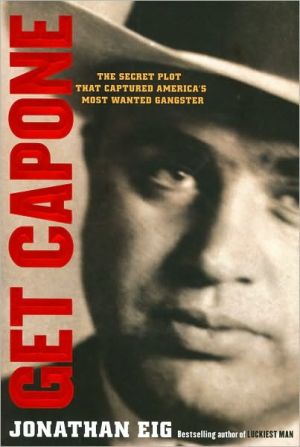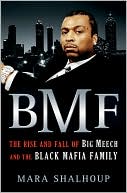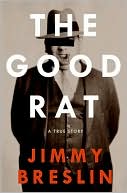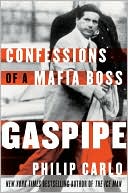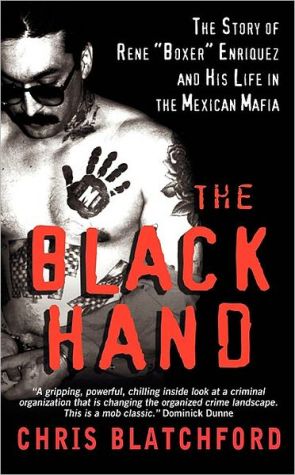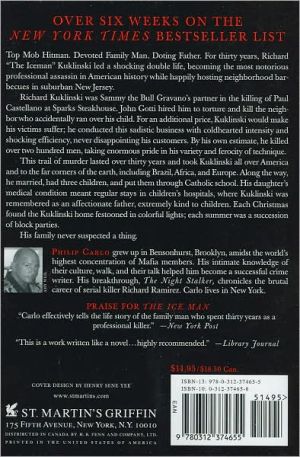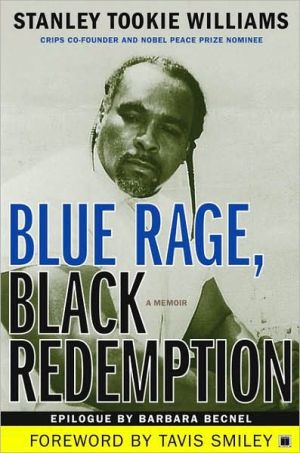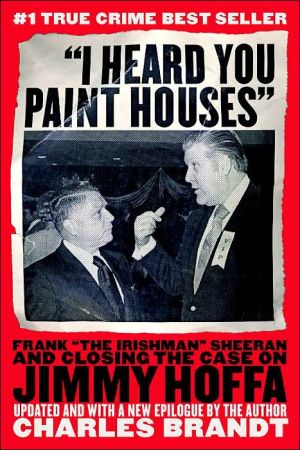Get Capone: The Secret Plot That Captured America's Most Wanted Gangster
When he arrived in Chicago in 1920, Al Capone found limitless opportunity. An impetuous, affable young man of average intelligence, within a few years he'd built a booming illegal bootlegging business, corrupted the police and courts, and become an international celebrity. Drawing on thousands of pages of recently discovered government documents, wiretap transcripts, and Al Capone's handwritten personal letters, Jonathan Eig tells the dramatic story of the rise and fall of the nation's most...
Search in google:
When he arrived in Chicago in 1920, Al Capone found limitless opportunity. An impetuous, affable young man of average intelligence, within a few years he'd built a booming illegal bootlegging business, corrupted the police and courts, and become an international celebrity. Drawing on thousands of pages of recently discovered government documents, wiretap transcripts, and Al Capone's handwritten personal letters, Jonathan Eig tells the dramatic story of the rise and fall of the nation's most notorious criminal in rich new detail. The Barnes & Noble Review In Jonathan’s Eig’s brilliantly researched and accessible "life and times" of the most notorious mobster of a notorious era, we learn that Al Capone’s biggest problem wasn’t the Chicago cops or vicious rival crime bosses. These could be bribed away or killed off, both “Scarface” specialties. What ultimately undid the legendary 1920s gangster was his craving to be as famous as Babe Ruth. Capone effectively crafted “a public identity as an overlord of the underworld,” writes Eig. As brazen bootlegging and rampant violence poisoned big cities like Capone’s Chicago, Scarface would describe himself in countless newspaper interviews as a self-made businessman simply offering what customers demanded. Capone was untouchable in Chicago, running his lucrative criminal syndicate with modern business techniques and resorting to violence when necessary. He paid police and judges for protection, and left rival gangs alone if they didn’t bother him. Yet as the gangland wars inevitably exploded, highlighted by the 1929 St. Valentine’s Day Massacre (when seven of Capone’s rivals were machine-gunned), the federal government intervened. Capone’s appetite for publicity put a bulls-eye on his back, explains Eig, making him the nation’s “leading symbol of lawlessness.” And as such, he attracted the attention and ire of President Herbert Hoover, who “gave the order to the top officials in every relevant agency: Get Capone.” Hoover not only supported Prohibition and obsessed about maintaining order, but seemed personally offended by Capone’s public image as a self-made businessman. The President, Eig writes, would begin each morning by asking his cabinet, “Have you got Capone yet?” Capone was eventually put away not for racketeering and murder but for tax evasion and his 1931 conviction would result in the maximum sentence of eleven years, much of it served in Alcatraz. Capone was finished. As Eig observes, his “popular appeal" was crucial to his rise toward the fame he craved -- but it "infuriated" those who might have otherwise ignored a single city's crime boss, and ensured his almost classic fall. --Chuck Leddy
Part 1 Capone Rising 131 The Getting of It 152 Good-bye, Diamond Jim 283 A Little House on South Prairie 434 "I'm Sure It Was Capone" 545 Funny Notions 696 A Man of Destiny 797 Heat Wave 908 "He Will Knock You Flat Just for Fun" 999 The Peacemaker 11110 Q Is for Quincy 12711 Sorry About That, Hymie 13912 A Smile and a Gun 15413 The Grinder 16214 The Better Element 174Part 2 King Capone 18515 "There's Worse Fellows in the World than Me" 18716 Uneasy Lies the Head 21217 Deepest in Dirt 23318 Pineapples and Coconuts 24119 The Graduation of Frankie Yale 26520 Hooverization 28421 "I Do Not Stay Up Late" 29622 The Enforcer 30123 The Formidable Alphonse 31924 Little Caesar 33125 St. Valentine's Day 345Part 3 Capone Falling 35926 "An Unsolved Crime" 36127 "The Most Sore Necessity of Our Times" 37128 The Brightest Days 38629 "Have You Got Capone Yet?" 40030 Locked Up 41331 Elegant Mess 42832 The Napoleon of Chicago 45133 The Big Fellow Chills 46434 Silent Partner 47335 "Lady, Nobody's on the Legit" 48336 Public Enemy Number One 50537 "There Is No Friendship Among Hoodlums" 53338 Contempt 54939 Death and Taxes 56240 United States Against Al Capone 57841 The So-Called Untouchables 60642 "Who Wouldn't Be Worried?" 61843 Big Spender 63644 The Verdict 648Epilogue 663Acknowledgments 715Sources 721Notes 725
\ Publishers Weekly“Not since the hunt for John Wilkes Booth... had so many sources been brought to bear in an attempt to jail one man,” writes former Chicago magazine editor Eig (Opening Day). But Al Capone eluded them all—even J. Edgar Hoover. In a page-turning account, Eig details the chase for the elusive Capone, dissecting both the man and his myth. Born in Brooklyn in 1899, Alphonse Capone came to a booming, bustling, corrupt, and very thirsty Chicago in 1920, just as Prohibition began. Rising swiftly through the underworld ranks, Capone soon headed a crime syndicate he dubbed “the outfit,” which dealt in bootleg alcohol, racketeering, drugs, and prostitution. Eig traces the largely unsuccessful efforts by various law enforcement agencies to bring him down. He focuses on U.S. Attorney George E.Q. Johnson, who finally saw Capone convicted in 1931 for tax evasion and conspiring to violate Prohibition laws, leading to an 11-year prison sentence. Using previously unreleased IRS files, Johnson's papers, even notes he discovered for a ghostwritten Capone autobiography, Eig presents a multifaceted portrait of a shrewd man who built a criminal empire worth millions. 16 pages of b&w photos. (May 1)\ \ \ \ \ James McManusMuch of this tale is familiar from earlier books…Yet Eig's is a welcome, even necessary, update…he sketches fresh profiles of scores of Italian, Irish and Polish mobsters, and of three presidents, three Chicago mayors and dozens of minor officials…Panoramic yet sharply focused, Get Capone is as much a dark history of urban America between the world wars as it is another mobster's life story…a gore-spattered thriller and a more nuanced upgrade over previous takedowns and hagiographies.\ —The New York Times\ \ \ Library JournalFormer reporter Eig has brought new life to the story of Al "Scarface" Capone, reporting on the life, crimes, and fall of America's most notorious gangster. Eig accessed newly discovered material to produce this fresh take on Capone, including the papers and never-released IRS files of Chicago's U.S. attorney, George E.Q. Johnson. He also discovered a letter that contains a plausible solution to the never-solved Valentine's Day massacre. (William "Three-Fingered Jack" White may have led the massacre to avenge the gangster killing of his cousin, a cop's son.) Wrapped in this biography is an engrossing account of Prohibition, Chicago, and legal history (Johnson's innovation of charging suspected criminals of lesser crimes to get a conviction is still in use today). Eig is a fascinating storyteller who throws in the occasional bon mot ("It was cold and gray, as if February had knocked off May and taken its place") that readers will enjoy. While the book would have benefited from a "cast of characters" to help readers keep track of the many players, the accompanying web site (getcapone.com) is a treasure-trove of material, including links to FBI and IRS files. VERDICT This book should be very popular with true crime and Prohibition history buffs; highly recommended. [See "Prepub Exploded," BookSmack!, November 5, 2009.]—Karen Sandlin Silverman, Ctr. for Applied Research, Philadelphia\ \ \ \ \ Kirkus ReviewsScrupulously researched account of the men who made the 1920s roar, and the straight-arrows who stopped them. Former Chicago magazine executive editor Eig (Opening Day: The Story of Jackie Robinson's First Season, 2007, etc.) rescues the narrative of Al Capone from the realm of pop melodrama, offering vibrant historical storytelling and a nuanced, enigmatic portrait of Capone and his Chicago milieu. The author discovered several long-forgotten archives of key documents, including unreleased IRS files and "Untouchable" Eliot Ness' wiretap transcripts. Eig constructs a plausible, often surprising narrative of criminality, but he also fleshes it out into a colorful urban social history. The Capone that emerges here is certainly a ruthless criminal, but far from the psychopath portrayed in films. He appears to be more a natural product of his time, a bemused immigrants' son who, in the brutal environment of working-class Chicago, intuited that Prohibition offered an opportunity to leap from tavern hustler to major profiteer. Capone was loyal to associates and devoted to his family, apparently tried to broker truces with other gangs before the inevitable internecine bloodbaths and loved nightlife, gambling and women so much that his nickname was "Snorky," meaning ritzy. The backdrop for Capone's evolution was a Chicago so chaotic and corrupt that its citizens actually returned the outrageously crooked mayor William Thompson to office, following a seemingly futile reform administration. Capone loved talking to the press, which thrilled people but infuriated the Feds. While "Secret Plot" seems an overstatement, Eig argues that Herbert Hoover was determined to make an example of the gangster, apreoccupation that persisted even as the Depression grew deeper. The flawed Ness' contributions were minimal, but a little-remembered state's attorney and IRS agent doggedly built an intricate case against Capone over several years. Their work seems compromised due to the interference of a vengeful judge, who threw out a plea agreement in order to send the gangster to trial and, ultimately, Alcatraz. An impressive, accessible history of a troubled time. Agent: David Black/David Black Literary Agency\ \ \ \ \ From the Publisher"[Eig] paints a masterly portrait of America's all-time favorite crime boss.... Rich in deaitl and historical context." —-The Christian Science Monitor\ \ \ \ \ The Barnes & Noble ReviewIn Jonathan’s Eig’s brilliantly researched and accessible "life and times" of the most notorious mobster of a notorious era, we learn that Al Capone’s biggest problem wasn’t the Chicago cops or vicious rival crime bosses. These could be bribed away or killed off, both “Scarface” specialties. What ultimately undid the legendary 1920s gangster was his craving to be as famous as Babe Ruth. Capone effectively crafted “a public identity as an overlord of the underworld,” writes Eig. As brazen bootlegging and rampant violence poisoned big cities like Capone’s Chicago, Scarface would describe himself in countless newspaper interviews as a self-made businessman simply offering what customers demanded.\ Capone was untouchable in Chicago, running his lucrative criminal syndicate with modern business techniques and resorting to violence when necessary. He paid police and judges for protection, and left rival gangs alone if they didn’t bother him. Yet as the gangland wars inevitably exploded, highlighted by the 1929 St. Valentine’s Day Massacre (when seven of Capone’s rivals were machine-gunned), the federal government intervened. Capone’s appetite for publicity put a bulls-eye on his back, explains Eig, making him the nation’s “leading symbol of lawlessness.” And as such, he attracted the attention and ire of President Herbert Hoover, who “gave the order to the top officials in every relevant agency: Get Capone.”\ Hoover not only supported Prohibition and obsessed about maintaining order, but seemed personally offended by Capone’s public image as a self-made businessman. The President, Eig writes, would begin each morning by asking his cabinet, “Have you got Capone yet?” Capone was eventually put away not for racketeering and murder but for tax evasion and his 1931 conviction would result in the maximum sentence of eleven years, much of it served in Alcatraz. Capone was finished. As Eig observes, his “popular appeal" was crucial to his rise toward the fame he craved -- but it "infuriated" those who might have otherwise ignored a single city's crime boss, and ensured his almost classic fall.\ --Chuck Leddy\ \ \
